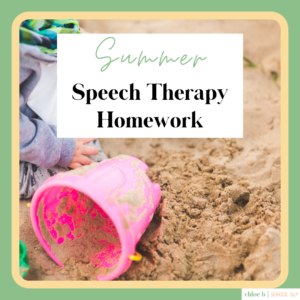Working memory is such an important component of memory that we use all day everyday! It’s how we hold on to the topic and information in a conversation.

It’s how we retain what we read as we’re reading it. It’s how we figure out a math problem in our head or follow directions without hearing them a second time.
That is why it is so crucial for our kids to have strong working memories! It impacts them at every grade level and on into adulthood. Working memory is not something parents or teachers easily think of when trying to help a child succeed. But it absolutely should not be forgotten! It is important that we know what working memory is and know strategies that we can teach students for improved academic success!
What is working memory?
Working memory is “the retention of a small amount of information in a readily accessible form” (Cowan, 2014). Now let’s trying putting that definition into simple terms. I like to explain it to people like this –
Pretend I give you a verbal direction. “Hey can you please grab the green notebook above my desk and give it Lily?”
Difficult? Maybe not for someone with adequate working memory skills.
You would just hang on to the information that you needed “green notebook above desk – give to Lily” at the front of your brain until the task was completed. Then you would let this info go – no need to hang on to it and remember it for short term or long term memory.
Now this situation could be totally different for a child with working memory deficits. He/She may come across to others as scattered, forgetful, not paying attention, disrespectful, stupid… you name it. But truly, they may have difficulty hanging on to information long enough to complete the necessary task with it.
I see this happen with my students all the time! They have difficulty with math problems unless they have pen/paper or some sort of visual. They have difficulty remembering what they read earlier on the page so comprehension questions are insanely hard for them.
It can show up in a variety of ways. If you suspect that your student is struggling with working memory, then I’ve got good news for you – you can strengthen it!
With lots of practice and typically a heavy reliance on strategies, students with working memory deficits can be successful! I’ve seen it with my own students!
I created a couple of resources via Boom learning to make working memory practice more hands-on and distance learning friendly!
There is a lot of value in first teaching the working memory strategies to equip students to then practice the strategies with a variety of tasks.
You can check out my Teaching Working Memory Strategies resource by clicking here for it on TPT or clicking here for the resource directly on Boom learning!

Here are the strategies from that resource:
5 Working memory strategies For students
1. Repeat it
Sometimes it is helpful to repeat what you’re trying to remember over and over again. For example, to remember the triangle color pattern above, I could say “green, yellow, blue, peach” “green, yellow, blue, peach” “green, yellow, blue, peach” etc.!
2. Picture it
Sometimes it is helpful to “take a picture” of the items in your mind. You may need to close your eyes and imagine that you’re seeing them. This can be especially helpful if you’re a visual learner. Focus on color, shape, and where the items are on the page.
3. Connect it
What do the items remind you of? I like to look at an image and connect it with something I’m familiar with in my life. This gives the items meaning and importance, which means your brain is more likely to remember it! You can connect the whole thing to something or connect each item to different things.
4. Chunk it
Sometimes it is helpful to group items together so that it feels like you have to remember less. Phone numbers are 10 numbers long but we remember them by chunking them into 3 groups: 3 (area code) – 3 – 4. This strategy is especially helpful when you have a lot (like a long list) to remember.
5. Sing It
Sometimes it is helpful to put music to items to make them easier to remember. Singing activates a different part of the brain which strengths the connection in your brain. It also makes it more meaningful and fun so remembering is easier!
And that’s it! 5 easy working memory strategies that you can teach your child/student today! If you want to now put those strategies into practice, check out my Practice to Improve Working Memory Boom card deck! Great interactive learning that is perfect for tele-therapy or distance learning!
What strategies do YOU use to help your working memory? I find myself repeating and chunking things all the time!! Let me know in the comments!
xxx *hugs*
Emily
References
Cowan, N. (2014, June 1). Working Memory Underpins Cognitive Development, Learning, and Education. Retrieved September 20, 2020, from https://www.ncbi.nlm.nih.gov/pmc/articles/PMC4207727/





2 Responses